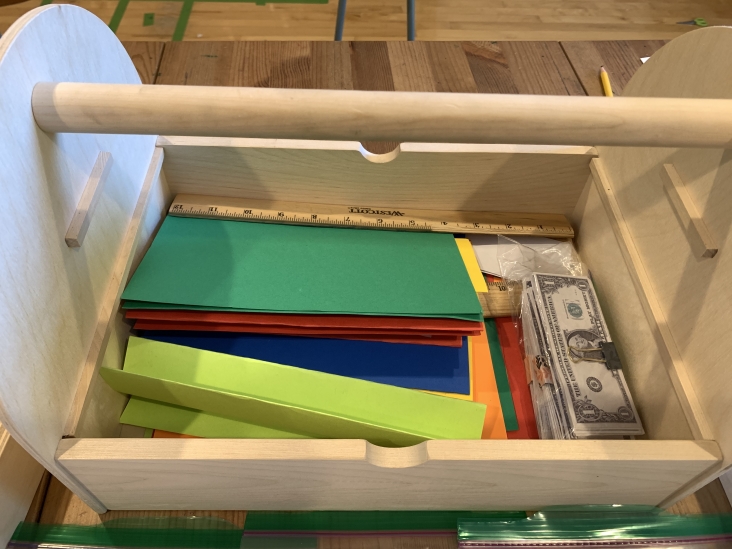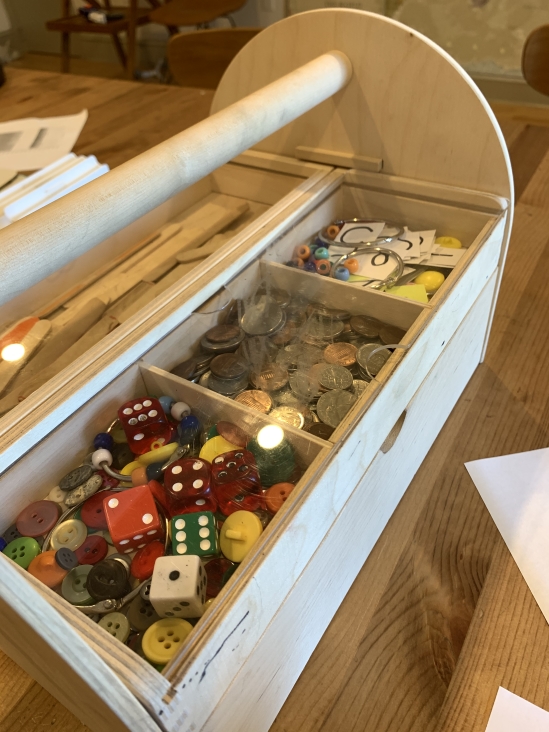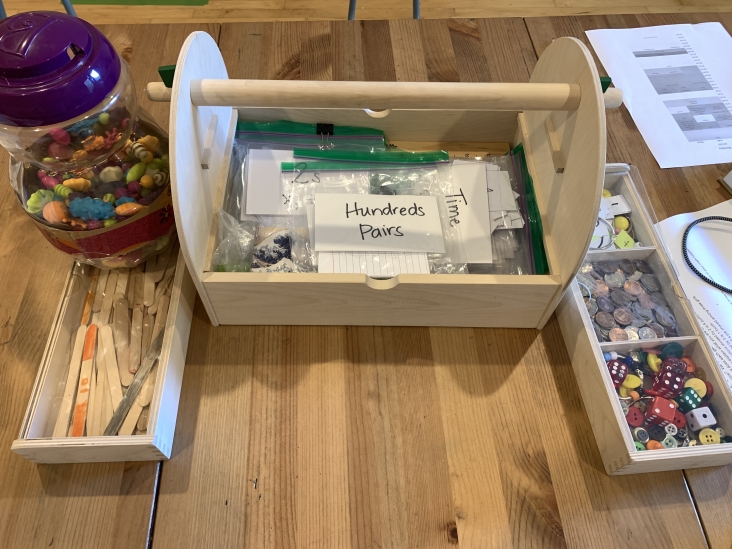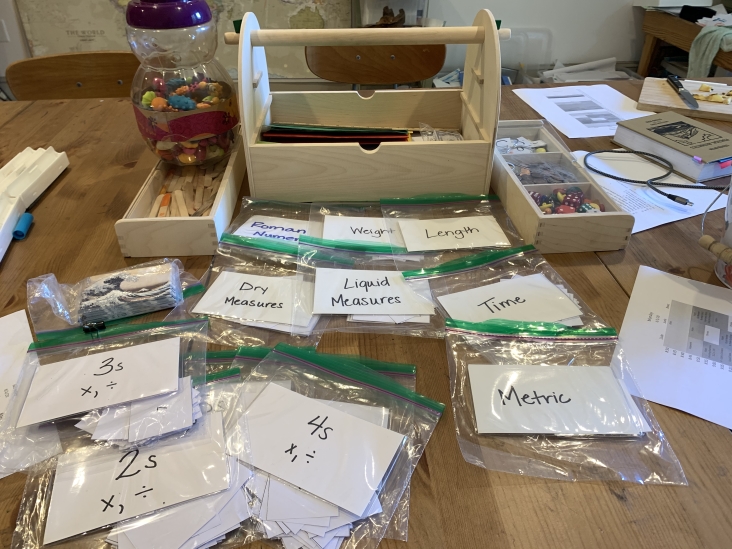
This immersion lesson demonstrates how to combine children of different ages and levels of learning during a single math lesson with Charlotte Mason’s method of teaching. Emily Al-Khatib and her three sons give a dynamic picture of how a sunshiny atmosphere, order and discipline, and living ideas make math a productive and enjoyable lesson together.
Listen Now:





Math at the Ready: Emily’s Handout with Independent Work Ideas

Emily, where did you find this wonderful box? It seems perfect for math tools & manipulatives! Thanks for sharing!
There’s a link just below the photos—it’s from IKEA.
Oops! I completely overlooked that!!! Thank you!
Thank you for this episode! I feel armed with fresh ideas for our math lessons and encouragement- I was already combining 2 of my children’s math times, now I feel more confident in combining the other 2 school age children as well. I think we’ll just work on 2 at a time first! We were totally giggling along with the boys at the end during the mental math 🙂
Amanda, we are tickled that that episode was inspirational and informational for you. I hope you have an even more dynamic math lesson time in the coming year.
This episode is so great! Thank you so much for this inspiration! I have a question. I think Emily mentioned not necessarily doing this every time or adjusting as needed, sometimes doing individual math lessons and sometimes combining. Can you speak to what helps you determine the need to do individual work versus combining as well as how you schedule that if you originally had your schedule set up to have a combined lesson that day? Or am I misunderstanding completely what you meant by that?! Thank you!
Rachel,
I am not sure there are specific guidelines. Perhaps one child is particularly struggling,, or a child is suddenly bored and needing some new material that will take more of the mom’s time and work…Some moms may choose to work with each child at least once a week one on one for some reason, or with each child once a week while others do more review. I would say just to base it on what seems to be the math need of the week. In general, I think most lessons can be done together.
Sorry. I guess I didn’t mean to make it sound like there are specific guidelines. I didn’t expect that. Just observations or examples of when that might be necessary, which is what you provided in your reply, so thank you. I assumed as much but I like to confirm my assumptions. My planner brain is struggling though with what to do if I plan every day of the week to do combined math lessons and then my child needs one on one that week. With 4 children in three different forms, the idea of having to even look at my scheduling cards again and rearrange things makes me want to crawl in a hole. Making the schedule is the hardest thing I do every summer and since I’m in the midst of it right now, my brain is reeling thinking I might have to change it. I know that’s my problem and my hang up and I’m probably overthinking it all, but that’s why I asked about it. Maybe I will just schedule once a week independent for everyone and the rest combined and hope it works. Lol
Excellent episode! This is one area I feel I can always use some improvement on, doing math lessons for different forms at the same time for both children. I especially appreciated Emily Al-Khatib’s tips and experiences working with a child with sensory processing disorder as this also tends to be an issue we deal with, maintaining the flow of information so the child isn’t overwhelmed and allowed to process information in a more comfortable way for them. Ladies, thank you for all the hard work and research you put into helping all of us to better understand CM and her teaching methods!
Sarah,
Thank you for the encouraging words. We are glad to hear that it gives you courage to attempt new ways of teaching.